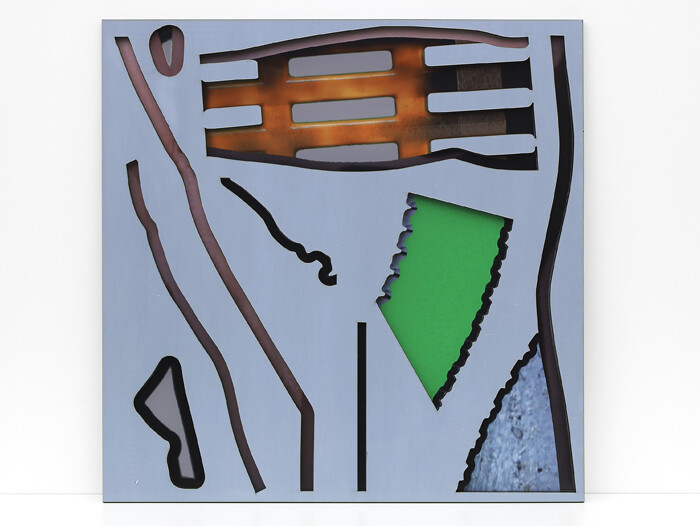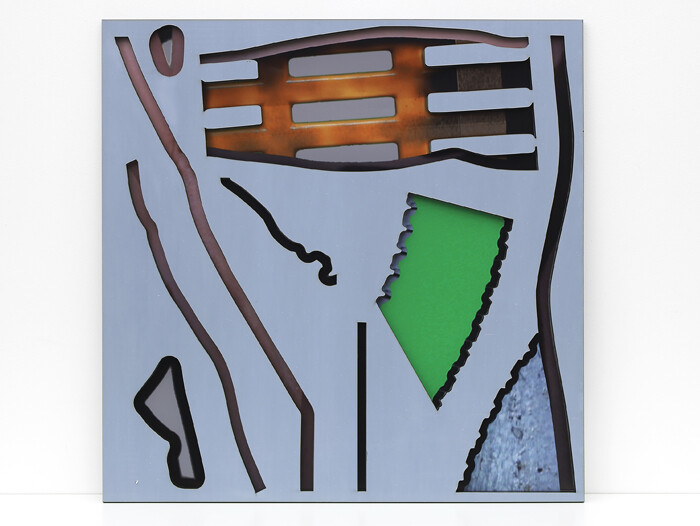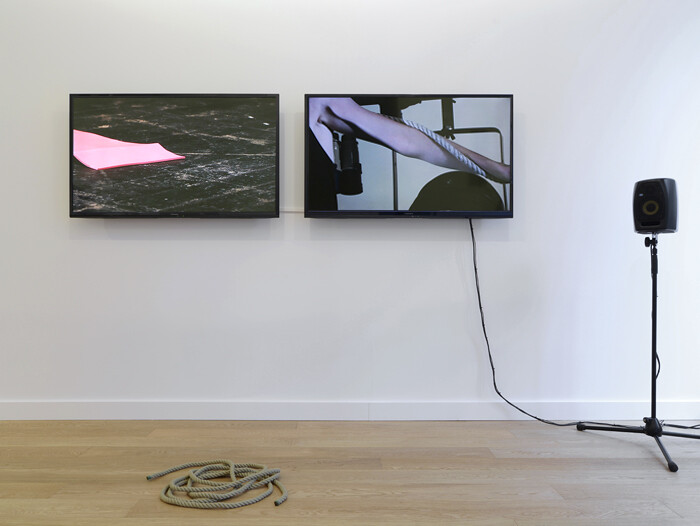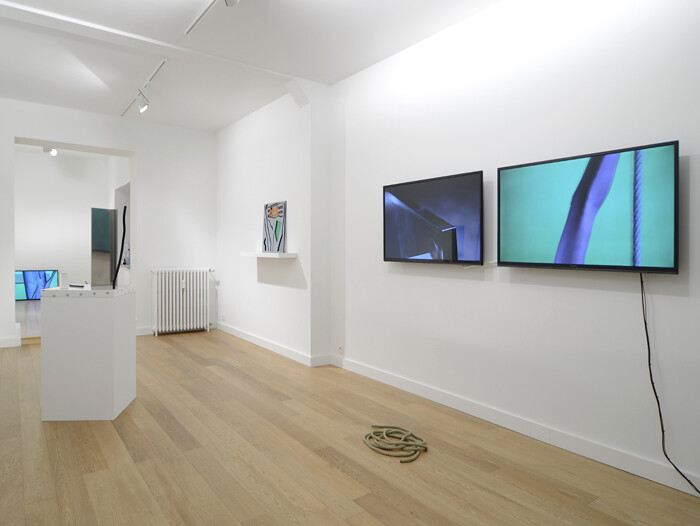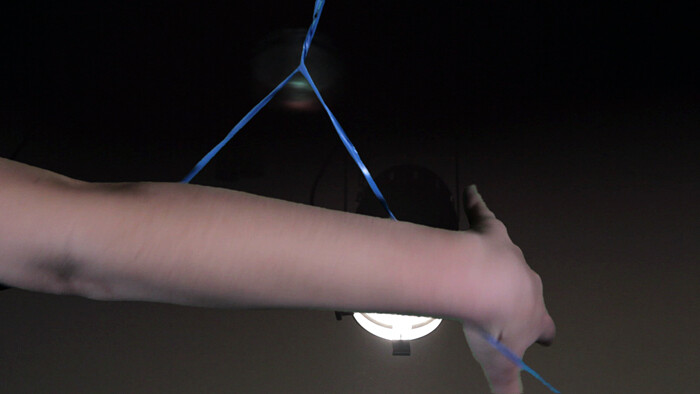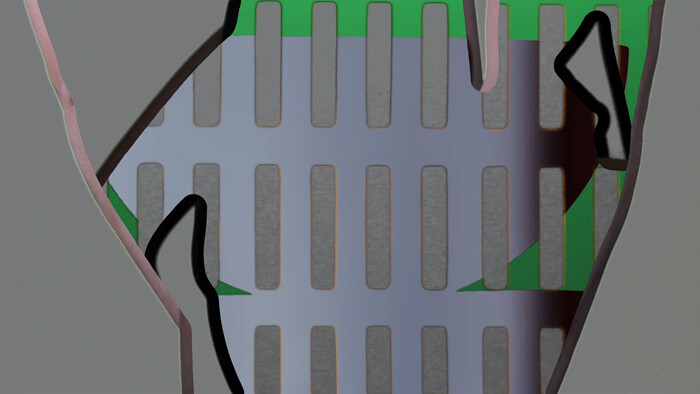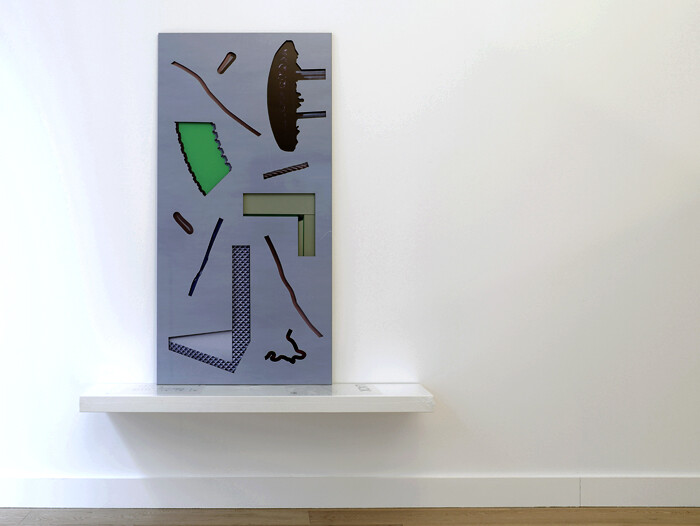A “dark pool” is a form of high-speed trading whose machinations take place outside the reach, and modicum of control, of regular markets. But rather than indict a hypertensive and extra-judicial financial system, David Panos’s “The Dark Pool” is concerned with a different set of transactions, binding labor and the labors of the image in our accelerated times. In contrast to the promises of personal emancipation and reconfigured communality that accompany progressively ethereal ways of being in the world, immaterial labor here is weighed down, mattered and gestured. It is embodied in figures that complicate the distinctions between abstraction and representation.
Video works, accompanied by sculptures that coagulate objects and ghostly images into the appearance of three-dimensional film stills undo the standard take on abstraction as a toolbox for comprehension of—or a scenography for ethical reconciliation with—the world. Panos’s investigation into abstraction seems to be, to equal extents, a historical critique and a taxidermic operation: it introduces detours into the chronology of philosophical maneuvers via which thought disincarnates and wrests intelligibility from matter; complementarily, it stuffs concepts with the material ballasts they sought to discard in order to be concepts and attain metaphorical lift-off from mundane, unholy realities. In “The Dark Pool,” two perspectives onto abstraction are conjoined in a remarkable anamorphosis.
The economic thread in the project picks up where Ultimate Substance, made collaboratively with Anja Kirschner in 2012, left off. Filmed in the mines from which Athenian democracy, tragedy, and warfare extracted their financial foundations, this work argued that “abstract substance” does not originate in the pursuits of metaphysics, but is invented in the practical necessity of equating two pieces of metal with different weights and concentrations of gold, of lubricating exchange and gelling the currency unit. If abstraction materializes in the coin, then metaphysics is a repeated ritual of cleansing, of forgetting the physical, corporeal debts of ideals. Plato looking away from actual slaves chained in the Greek mines to invent their allegorical avatars is perhaps the first episode in this story of programmatic oblivion.
Formally uniting the earlier and recent projects is a convulsive choreography of labor: the video The Dark Pool (2014) is a pulsating edit of—even if “into” feels like the more accurate preposition—footage of improvisations at the Teatro Valle in Rome, whose occupation by actor/squatters ended last year. Mobilizing a limited range of props, more suggestive of a generic domesticity than theatrical performance, the choreography produces hybrids of gesture and instrument, of “hammer” and “master”—to borrow the words of avant-garde writer Antonin Artaud. Entangled in things or interlocking to hold one another in check, the limbs that perform the film’s script indicate both ruptured intimacies and surplus exertion, muscular contractions that ape efficacy and are divested from numbly resistant objects.
Cross-breeds of human and not, of place and void recur in the two other films, where anthropomorphic cut-outs and abstracted bodies seem to cast shadows of flesh, and perhaps more poignantly in Panos’s use of the green screen as quasi-protagonist, with chroma-key goo spilling onto the forefront of the image, seeping through the things and selves whose transformation it could have “movied.” This suspension translates to the sculptural series Lack and Aspic Ratio (both 2014) that juxtapose Perspex prints of inert visual data, coiled rubber mats, and Ikea shelves captive in their plastic wrapping.
If an abstraction is grasped mimetically here, what we might be looking at is a representation of ideological glue, pasting selves onto places in a sequence of images whose only stable coordinates are speed and redundancy. The “dark pool” might be both viscous origin and opaque destiny of the liberal cosmogony: that into which all that is solid decomposes—and from which it reconstitutes. Art history students are told that the birth of an abstract picture is an attempt to leave behind burdensome physicality and capture the secret motion of ideas: another immaculate narrative, not unlike metaphysics, installs a regime of representation freed from material anchors or complicities. It might be useful to recall here an alternate, impure origin of the non-figurative, gestating throughout the nineteenth century in a disparate range of works such as Honoré de Balzac’s Unknown Masterpiece (1831), where a portrait is obliterated under a mass of scrawls and smudges, the white or black squares that appear in Gustave Doré’s or Cham’s caricatures as residues of an aborted representation, or the monochromes of Alphonse Allais, claiming to arise from an excess of figuration, from the meticulous mimesis of so many like-colored objects that their chromatic attributes suffuse the picture. The green screens usurping the space of performance in Panos’s film echo this story of abstraction as botched representation and palimpsest of incomplete, amputated, defaced figures, rather than visual noesis. So does the visceral continuum his exhibition suggests between economic and visual specters, dis-figurations and their material, fleshed-out equivalents.
Writer Keston Sutherland is the theoretical interlocutor of “The Dark Pool”—the exhibition handout carries an excerpt from his essay Marx in Jargon (2008) and provides a clue as to what that continuum might be made of. Sutherland describes a curious case of censorship, where translators expunge irony from Marx, fearing that a comical turn of phrase, intent on shocking or disgusting his reader by pregnant analogies, might debilitate the solemn, combat-ready theorist. Marx’s term for labor is Gallerte, a tremulous comestible mass that holds fragments of meat or shards of vegetables in the translucent semblance of a meal. Generally translated—and domesticated—as the abstract euphemism “congelation,” Marx’s gelatin is a material, collapsed metaphor of labor: never more and never less than labor, a concatenation of brains, muscles, nerves, and hands almost touching one another. In the exhibition, abstraction is the malleable and inescapable nothingness of Gallerte, embalming subjects in post-industrial, high-resolution, toxic amber.
